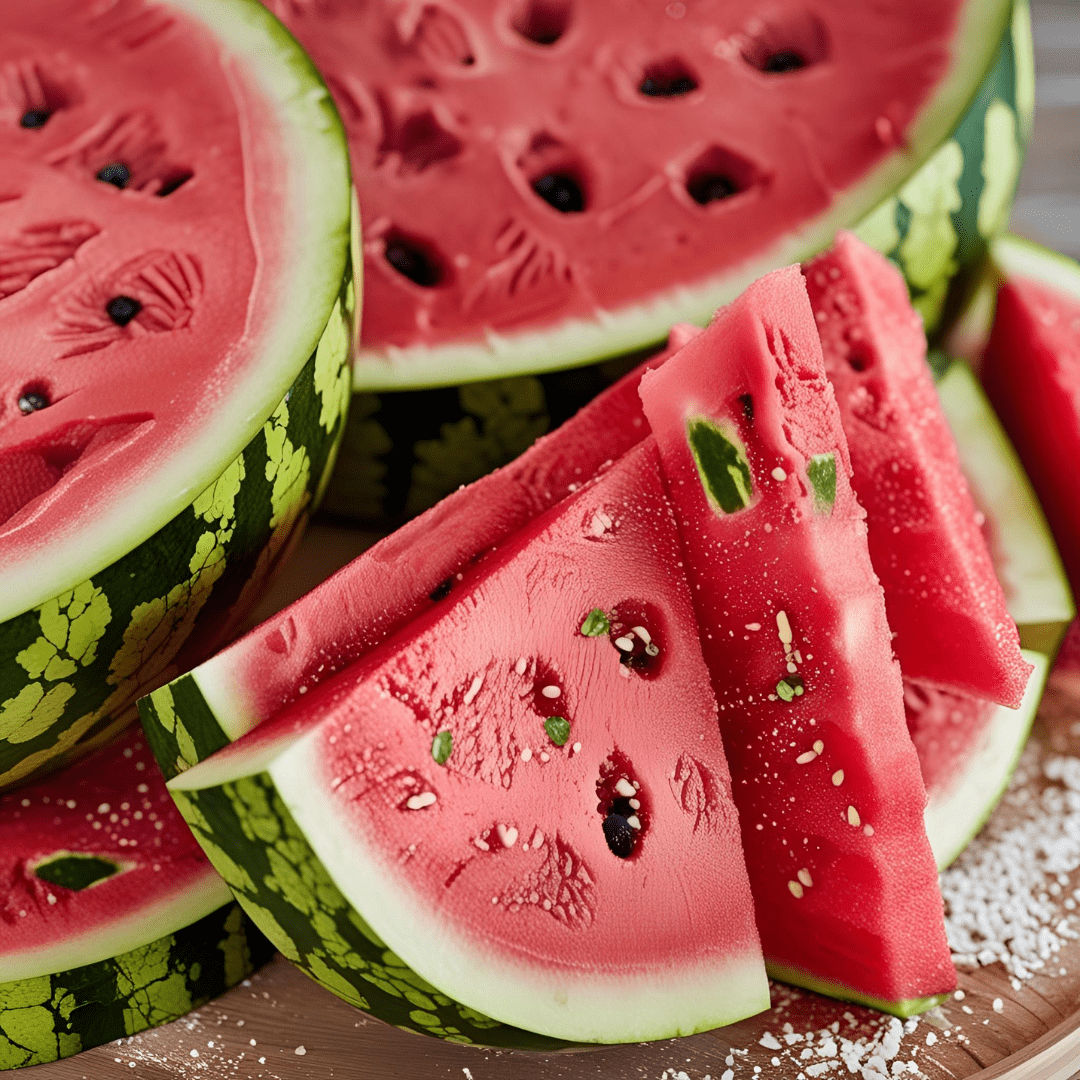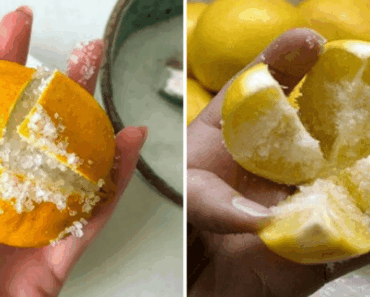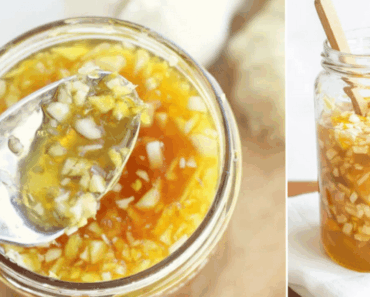Every summer, millions of watermelons are devoured, their juicy red flesh savored at picnics, barbecues, and family gatherings. But after the last bite, most people toss the thick green rinds in the trash or compost. What if you learned that those neglected rinds are not only edible, but can be transformed into a super tasty, versatile treat—especially with a surprising twist: baking soda? This article explores the culinary magic and health benefits of watermelon rinds, and why adding baking soda is the key to unlocking their full potential.
Why Watermelon Rind Deserves a Second Look
Watermelon rind, the pale green layer between the juicy red flesh and the tough outer skin, is often overlooked. Yet, it’s packed with nutrients, fiber, and unique culinary possibilities. Like its cousin the cucumber, watermelon rind is entirely edible and surprisingly versatile.
Nutritional Powerhouse
-
Rich in Citrulline: Watermelon rind contains citrulline, an amino acid that supports healthy blood flow, may improve exercise performance, and could even help with mild erectile dysfunction5.
-
High in Fiber: The rind is a great source of dietary fiber, which supports digestion, helps regulate blood sugar, and promotes a feeling of fullness—useful for weight management54.
-
Loaded with Vitamins and Minerals: It offers vitamins A, C, B6, potassium, magnesium, and zinc, supporting everything from skin health to immune function6.
-
Natural Diuretic: Watermelon rind may help lower blood pressure thanks to its diuretic properties56.
The Baking Soda Trick: Science Meets Tradition
You might wonder: Why add baking soda to watermelon rinds? The answer is both scientific and culinary.
Firmness and Texture
When making candied or pickled watermelon rind, the goal is to create a treat that’s tender yet holds its shape. Baking soda (sodium bicarbonate) plays a crucial role in this process:
-
Cell Wall Strengthening: Baking soda helps reinforce the pectin in the rind’s cell walls, making them firmer and less likely to break down during cooking. This keeps the rind pleasantly crisp, even after simmering in syrup or brine2.
-
Prevents Mushiness: Without baking soda, watermelon rind can become soft and mushy when cooked. The soda preserves texture, resulting in a satisfying bite21.
Flavor Enhancement
Baking soda can also mellow the sometimes bitter or vegetal notes in the rind, making the final product more palatable and sweet2.
How to Transform Watermelon Rind with Baking Soda
Let’s dive into the most popular and delicious way to use watermelon rind: candied or pickled watermelon rind. Here’s a step-by-step guide, inspired by traditional recipes and modern twists.
Ingredients
-
1.5 kg (about 3 1/3 lbs) watermelon rind
-
30g (2 tablespoons) baking soda
-
800g (4 cups) sugar
-
1L (5 cups) water (plus more for soaking and boiling)
-
5 whole cloves (optional, for flavor)
-
1/2 lemon (for brightness)
-
Optional: cinnamon stick, ginger, or other spices for extra depth123
Preparation Steps
1. Prepare the Rind
-
Cut the watermelon and enjoy the red flesh.
-
Peel off the tough green outer skin with a vegetable peeler.
2. Baking Soda Soak
-
Place the cut rinds in a large bowl.
-
Dissolve the baking soda in enough water to cover the rinds.
-
Soak the rinds for at least 6 hours or overnight. This step is crucial for firming the texture2.
3. Rinse and Parboil
-
Drain and rinse the rinds thoroughly to remove excess baking soda.
-
Boil the rinds in fresh water for 5–10 minutes, then drain. This further softens the rinds and removes any bitterness2.
4. Simmer in Syrup
-
In a large pot, combine sugar, water, cloves, and any other spices you like.
-
Add the parboiled rinds and bring to a gentle simmer.
-
Cook for 30 minutes, stirring occasionally, then add lemon juice and continue simmering for another 1–1.5 hours until translucent and tender21.
5. Store and Enjoy
-
Transfer the candied rinds and syrup to sterilized jars.
-
Store in the refrigerator for up to two years, or process in a water bath for long-term shelf storage2.
Flavor Variations
-
Spiced: Add ginger, cinnamon, or star anise for a warming note.
-
Citrusy: Use orange or lime zest for a bright, fresh flavor.
-
Savory: For pickled rinds, add garlic, chili, and dill to the brine6.
How Does It Taste?
The result is a sweet, chewy treat with a texture reminiscent of candied citrus peel or Turkish delight. The baking soda ensures the rinds stay pleasantly firm, while the syrup infuses them with flavor. These candied rinds can be eaten on their own, used as a topping for yogurt or ice cream, or chopped and added to baked goods.
Pickled watermelon rind, another classic preparation, has a tangy, crunchy character—perfect as a side for grilled meats, in salads, or as a snack6.
Health Benefits: More Than Just a Treat
Eating watermelon rind isn’t just about avoiding waste—it’s good for you, too.
-
Supports Heart Health: Citrulline helps relax blood vessels and may lower blood pressure5.
-
Boosts Immunity: Vitamin C and antioxidants in the rind support immune function6.
-
Aids Digestion: High fiber content promotes gut health and regularity54.
-
May Enhance Performance: Citrulline’s effects on blood flow can benefit both athletic performance and, as some studies suggest, sexual health5.
Creative Ways to Use Watermelon Rind
Beyond candying and pickling, there are many unexpected ways to use watermelon rind in your kitchen:
-
Stir-fries and Curries: Dice and sauté with other vegetables for a crunchy, mild addition to Asian-inspired dishes6.
-
Smoothies: Blend peeled rind with fruit for extra fiber and nutrients.
-
Salads: Shred or julienne and toss with vinaigrette, herbs, and seeds.
-
Watermelon Tea: Simmer chopped rind in water, strain, and serve hot or cold with lemon6.
-
Relishes and Chutneys: Cook with vinegar, sugar, and spices for a tangy condiment.
Reducing Food Waste: A Win for the Planet
Using watermelon rind is a simple, delicious way to cut down on food waste. Every year, tons of edible rinds are discarded, contributing to landfill and greenhouse gas emissions. By repurposing the rind, you’re not just making a tasty treat—you’re making a sustainable choice.
Safety and Tips
-
Wash Thoroughly: Always scrub the watermelon before peeling to remove dirt and pesticides.
-
Remove Seeds: If using rind near the red flesh, remove any seeds to avoid bitterness.
-
Store Properly: Candied or pickled rinds keep best in airtight containers in the fridge or pantry.
The Unexpected Delight: Why You’ll Love It
Most people are shocked at how delicious candied or pickled watermelon rind can be. The texture is unique—crisp yet tender—and the flavor is a delightful blend of sweet, tart, and aromatic. The baking soda trick is the secret to this transformation, turning what was once kitchen waste into a gourmet ingredient.
Conclusion: Don’t Toss, Transform!
Next time you slice into a watermelon, don’t toss the rinds. With a little baking soda and some simple steps, you can create a treat that’s not only super tasty but also packed with nutrition and totally unexpected. Whether you candy, pickle, or sauté them, watermelon rinds are a culinary treasure waiting to be discovered. Give it a try—you might just find your new favorite summer snack!
Quick Recipe Recap: Candied Watermelon Rind with Baking Soda
-
Peel and cube watermelon rind.
-
Soak in water with baking soda overnight.
-
Rinse, parboil, and drain.
-
Simmer in sugar syrup with spices.
-
Store and enjoy for months!
Super tasty, very unexpected—and a delicious way to make the most of every watermelon213.
- https://www.youtube.com/watch?v=jykOM99g4WU
- https://sweetandsavory.co/candied-watermelon-rind-recipe/
- https://www.youtube.com/watch?v=67pRRcQy9FQ
- https://www.tiktok.com/@creative_explained/video/7182698619529727274?lang=en
- https://www.healthline.com/health/food-nutrition/watermelon-rind-benefits
- https://kindcooking.com/3-great-uses-for-watermelon-rind/
- https://www.youtube.com/watch?v=qtJyMdegga4
- https://www.instagram.com/reel/C2KTUk5Aaeo/?locale=zh_CN








